What is Off-Cycle Open Enrollment?
And 9 other questions you didn’t know you had on the topic.
Considering off-cycle open enrollment but not sure where to start? We have you covered! Check out our list of 10 common questions around off-cycle open enrollment and the benefits this transition may have for your team.
- Ok, first things first… What is off-cycle open enrollment?
The definition of off-cycle open enrollment (sometimes known as mid-year open enrollment) is simple: it is when a company decides, for various reasons, to move their benefits open enrollment from the typical fourth quarter to a different (usually less busy) time of year. Once a company decides to move its open enrollment process to an off-cycle schedule, some of their employees’ benefits become effective off-cycle as well.
- Why would a company consider off-cycle enrollment?
For various reasons but mainly, convenience. Certain businesses (particularly B2Bs) have a very busy calendar year-end, the typical time for open enrollment (with an effective date of January 1). This “end-of-year crunch” sometimes leaves employees rushing through their benefits selection process. Companies that are looking for ways to alleviate the stress and workload at the end of the year, or want to ensure their employees prioritize their benefits enrollment would benefit from an off-cycle enrollment.
- Are there other benefits of an off-cycle open enrollment?
Companies with busy year-ends benefit from an off-cycle open enrollment because it allows their team members to focus on their clients’ needs at the end of year. Year-end is stressful, both professionally and personally, and holiday leave time further shortens the time frame for reaching out to employees and completing necessary enrollment steps and paperwork. Off-cycle open enrollment will help relieve some of that year-end stress.
Smaller companies can also benefit from off-cycle open enrollment since fewer companies are “going to market” (searching for benefit packages) for medical plan carriers and other providers, this allows them to be more attentive. The market saturation during year-end can leave small companies in a time crunch to get any information they can into their team members’ hands. Going off-cycle allows for a better experience for the entire team.
- Once a company decides to move to an off-cycle open enrollment, will they continue to process open enrollment off-cycle, going forward?
Yes, companies that choose to do off-cycle open enrollment typically stay on the same off-cycle schedule for the foreseeable future.
- Is the first off-cycle open enrollment a good time to re-consider carriers?
Yes! A company’s first off-cycle open enrollment is a great time to revisit benefits options. As mentioned previously, moving off-cycle allows for all decisions to be made at a less busy time of year. This is true internally as well as on the vendor side. Medical providers and other carriers have more time to focus on your team and their needs; therefore, you have more time to compare plans and leverage that information to make the best choices for your company.
- When do benefits become effective if a company does off-cycle open enrollment?
Part of the luxury of off-cycle open enrollment is that companies have the ability to choose a benefits effective date that makes best sense with their own business cycle. Typically, companies choose the beginning of a financial quarter, just to keep things as simple as possible.
- Do all medical plan carriers allow off-cycle enrollment?
No. It is important to know that not all carriers offer off-cycle enrollment, so you should work closely with your benefits broker or in-house benefits leadership to ensure you are working with a provider that offers this option.
- What happens if an employee, who has enrolled in the off-cycle enrollment benefits, decides to change their medical coverage to a plan elsewhere (e.g., their spouse’s on cycle plan)?
If an employee who enrolled in medical coverage during the off-cycle enrollment decides to change their coverage to an outside plan; the open enrollment session for that plan would count as a life event, and they would be able to do so. Note: If any money was applied towards a deductible (also known as deductible credit) this money will not transfer over to the new “on-cycle” plan.
- What happens to the money a team member has paid to their current plan toward their deductible and out-of-pocket maximum when the change to off-cycle open enrollment occurs?
With off-cycle open enrollment, deductibles and out-pocket maximums continue to run on the calendar year. Any money that has been paid into the plan before the open enrollment session will be carried forward and applied to the new plan. This is true even if a company decides to change coverage providers. If changing coverage providers, there is a delay from when the previous plan ends to allow for the claims process to occur before the previous vendor can communicate the funding to the new provider. The delay can take anywhere from 2 to 4 weeks.
- How do FSAs and HSAs work on off-cycle open enrollment?
FSA changes can be made during an off-cycle open enrollment or at the beginning of the year. HSA changes can be made anytime during the year. So, if a team member elects a plan during the off-cycle open enrollment that includes an FSA, they can start contributing to the FSA, but they will only have the remainder of the calendar year to use those funds. The FSA’s “use it or lose it” policy still revolves around the calendar year, which means all expenses must be incurred by December 31 of the calendar year. (Remember that employees can file for reimbursement on calendar year expenses up until March 31 of the following calendar year (per IRS regulations)
Great! Is there anything else I need to know about off-cycle open enrollment?
Open enrollment is one of the busiest times of year for HR teams. If moving it to a less busy time of year makes it easier for your entire team, it may be worth considering.
Contact Mosaic Consulting Group to find out more about specifics and how you can optimize UKG Pro for off-cycle and on-cycle open enrollment.




